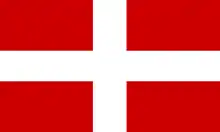Savoyard state
The Savoyard state is a term of art used by historians to denote collectively all of the states ruled by the counts and dukes of Savoy from the Middle Ages to the formation of the Kingdom of Italy.
Savoyard state | |||||||||
|---|---|---|---|---|---|---|---|---|---|
| 1003–1861 | |||||||||
 Coat of arms of Kings of Sardinia
| |||||||||
Motto: FERT | |||||||||
 The Savoyard state in 1839 | |||||||||
| Status | Former plurinational independent state | ||||||||
| Capital | Montmélian (1006–1295) Chambéry (1295–1562) Turin (1562–1792)-(1815–1821) Cagliari (1792–1815) | ||||||||
| Common languages | Italian, Piedmontese, French, Latin, Arpitan, Occitan | ||||||||
| Religion | Roman Catholicism | ||||||||
| Government | County, Duchy and Kingdom | ||||||||
| Count Duke King | |||||||||
• 1003–1048 | Humbert I White Hands (first) | ||||||||
• 1849–1861 | Victor Emmanuel II of Italy (last) | ||||||||
| Historical era | Medieval era Modern era | ||||||||
• Humbert I became Count of Savoy | 1003 | ||||||||
| 1861 | |||||||||
| |||||||||
History
The multi-century history of Savoy included the period before the County of Savoy, then the County of Savoy, the Duchy of Savoy, the period from Savoy to Sicily and Sardinia before Italian unification, and thereafter.
From the Middle Ages, the state comprised the Duchy of Savoy, the Principality of Piedmont, the Duchy of Aosta and the County of Nice. From 1708, it included the Duchy of Montferrat, then the Kingdom of Sicily from 1713 until 1720, the Kingdom of Sardinia from 1720, and the Duchy of Genoa from 1815. These territories formed a composite state under the House of Savoy until the promulgation of a single constitution, the Statuto Albertino, was established in 1848. By 1861, this unified state had acquired most of the other states on the Italian peninsula and formed the Kingdom of Italy, while its territories north and west of the Alps (including Savoy proper) became part of France.
The Final Act of the Congress of Vienna of 1815 refers to them as the "States of His Majesty the King of Sardinia". Among contemporaries, "Kingdom of Sardinia" and "Sardinia" were used as common short forms, even though they were confounded with the island. "Piedmont", "Savoy-Piedmont" and "Piedmont-Sardinia" are also sometimes used to emphasise that the economic and political centre of the Savoyard state was the Piedmont since the late Middle Ages. The seat of the rulers was in Turin. Each state had its own institutions and laws.
Territory
 Savoy during the Karling Empire
Savoy during the Karling Empire- County of Savoy during the 12th
- Duchy of Savoy in the 15th
 Italian Peninsula in 1843
Italian Peninsula in 1843 Proper Savoy today
Proper Savoy today Today's Administrative Piedmont in Italy
Today's Administrative Piedmont in Italy
Flags
 The first counts used the Holy Roman Empire banner as proof of their loyalty to the Emperor
The first counts used the Holy Roman Empire banner as proof of their loyalty to the Emperor Flag of the County of Savoy and Duchy of Savoy (until 1783)
Flag of the County of Savoy and Duchy of Savoy (until 1783) Flag of the Kingdom of Sardinia used in the late 18th (1783-1802)
Flag of the Kingdom of Sardinia used in the late 18th (1783-1802).svg.png.webp)
.svg.png.webp) Flag of Kingdom of Sardinia (1848–1861)
Flag of Kingdom of Sardinia (1848–1861)
References
